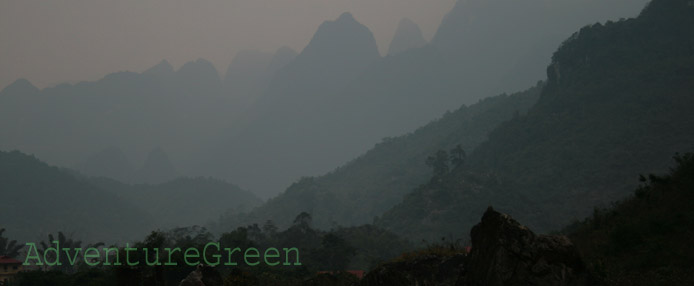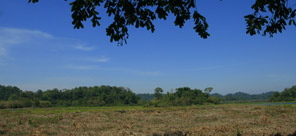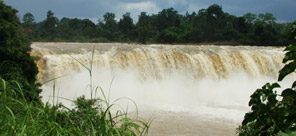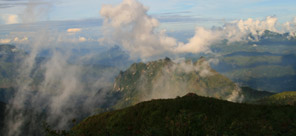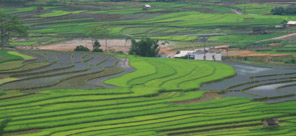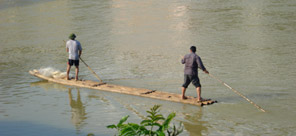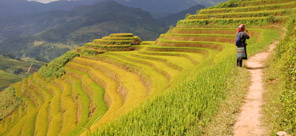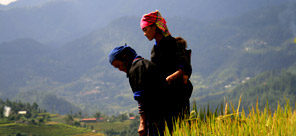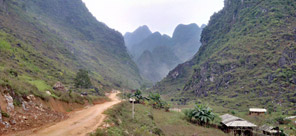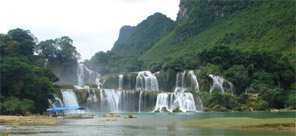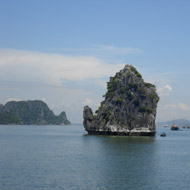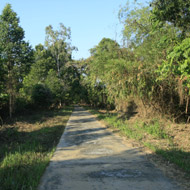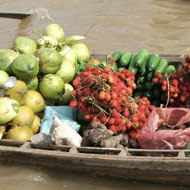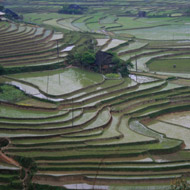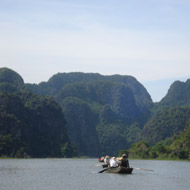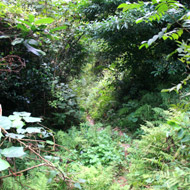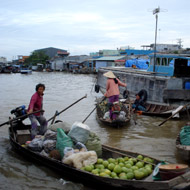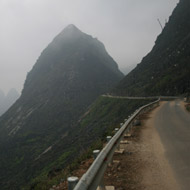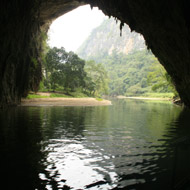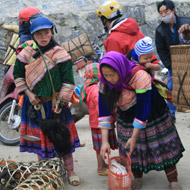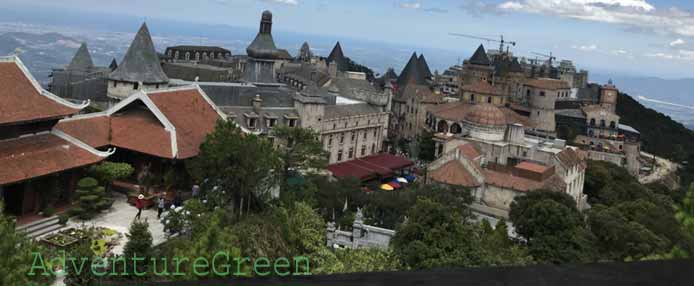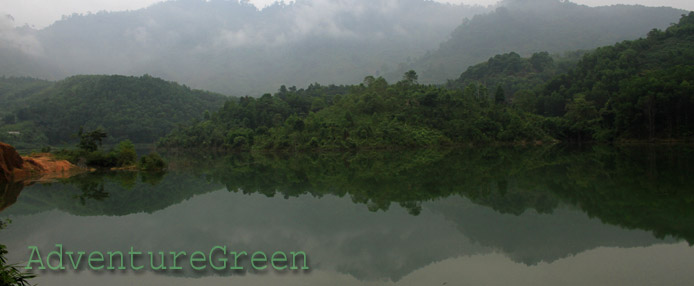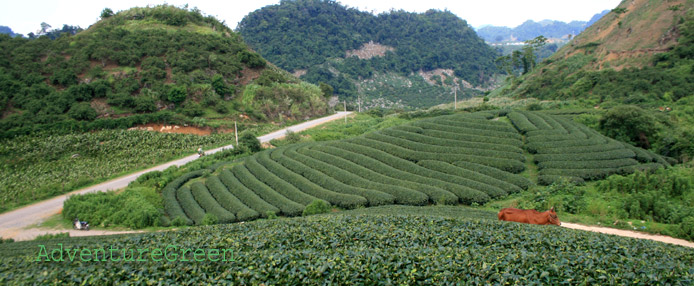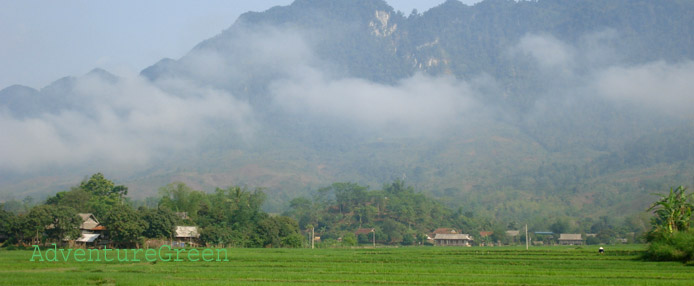It is a tough question as to when is the best time to visit Vietnam. The country is narrow and long, stretching for over 2,000km from the top north to the bottom south with 3,200km of coastline, and with different altitudes ranging from sea level to over 3,000m above sea level. The terrains in Vietnam range from vast flat plains to rugged limestone mountains.
Generally speaking, Vietnam has a tropical monsoon climate; but depending on the latitude and altitude, the climate may vary considerably from region to region.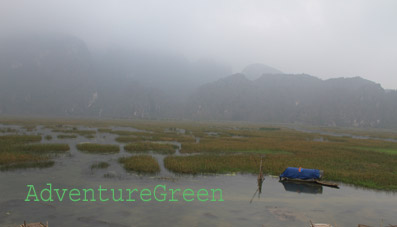
Northern Vietnam
In the North of Vietnam, there are 4 seasons. Spring time is from February to April. It's damp and misty from February to March with temperatures from 10 to 25 Degrees Celsius. It starts getting breezy, dry, clear sky and pleasant temperatures (20-25 Degrees Celsius) from the end of March through April. In mountainous regions (the North East and North West), there may be frost and snow for a couple of weeks after Christmas.
Summer is from May through August with temperatures from 30 – 40 Degrees Celsius with high humidity (above 90%). Autumn is from mid of September to November with temperatures from 18 to 20 Degrees Celsius. There may be typhoons in the summer and autumn which normally cause torrential rain and violent wind in a few days.
The Central Region (Central Coast) of Vietnam
The Central Region of Vietnam tends to have a similar climate to that in the North. The difference is that the summer (April-August) is very hot (36-40 Degrees Celsius); and it's rainy and stormy from September through November. The winter is from November through December with temperatures from 15-20 Degrees Celsius. There may be bad floods in certain regions between Nghe An Province to Quang Ngai Province in November. Traveling by train and by road in the Central Region of Vietnam during this time may be affected.
The Central Highlands of Vietnam
The Central Highlands of Vietnam are series of plateaus to the west of the Mid and the South Central Coast. The climate in the Central Highlands are quite similar to that of the Central Coast but with variables thanks to higher altitude. The temperatures are more pleasant than those in the Central Coast (3-5oC lower).
Weak Northeasterly Wind does not cause much rain in the Central Highlands as in the Central Coast and the rainy season in the Central Highlands concludes 2-3 weeks earlier than that in the Central Coast. Besides, the Central Highlands is influenced by the South-Westerly Monsoon which causes earlier rain that in the Central Coast. The Southwesterly Wind caused dry and hot weather in the Central Coast due to foehn effect.
Southern Vietnam
Southern Vietnam
The South of Vietnam has 2 seasons per year. The dry season is from late November through April and the rainy season is for the rest of the year.
It's pleasant temperatures from January to early March (20-33 Degrees Celsius). The hottest months in the South are mid March, April and early May when it may reach 40 Degrees Celsius. The temperatures turn nicer from June when temperatures range from 30 Degrees Celsius to 33 Degrees Celsius. The temperatures are very pleasant in October – December (19-31oC).
In the rainy season, it rains a couple of hours every day refreshing the air. It's normally breezy and pleasant at night in the South. At the end of the rainy season from late September to early November, it rains heavily and the rain may last for several days.
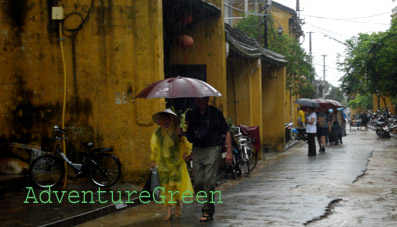 Climate Change
Climate Change
Due to global warming and activities harmful to the environment by human beings, the climate in Vietnam has changed dramatically over the last 10-15 years. There seems to be more floods in the Central Regions of Vietnam in the last 10 years than before. There are typhoons in the South of Vietnam nowadays which was not the case earlier. It rarely snowed in Vietnam earlier, but from 1999 snow has been more of the norm every year. The snow tends to be thicker and lasts much longer. In 2013, there was thick snow for nearly two weeks in both the North East and North West of Vietnam. Typhoons seem to have more and more violent gusts of wind.
But, it is not all that bad as we have recorded recently that the temperatures remain pleasant throughout the summer in northern Vietnam in certain year. Some travelers make their trip to Vietnam during the summer to enjoy low travel costs accepting the heat and it turns out that they have both good rates and beautiful weather.
Tourist Seasons in Vietnam
The peak domestic tourist season in Vietnam is from May through the first half of September. This is school summer vacation for kids and there are some big public holidays during this time; and most seaside attractions, beaches, hill stations are busy with Vietnamese tourists. During the domestic tourist season, travel services such as seaside hotels and resorts, airfares, train tickets, boats on Halong Bay,... may be booked out.
The high season for foreign travelers in Vietnam is from November through April, the peak months are November and March. During the foreign tourist season, services such as centrally located hotels, airfares on popular routes, beach resorts tend to be booked out.



